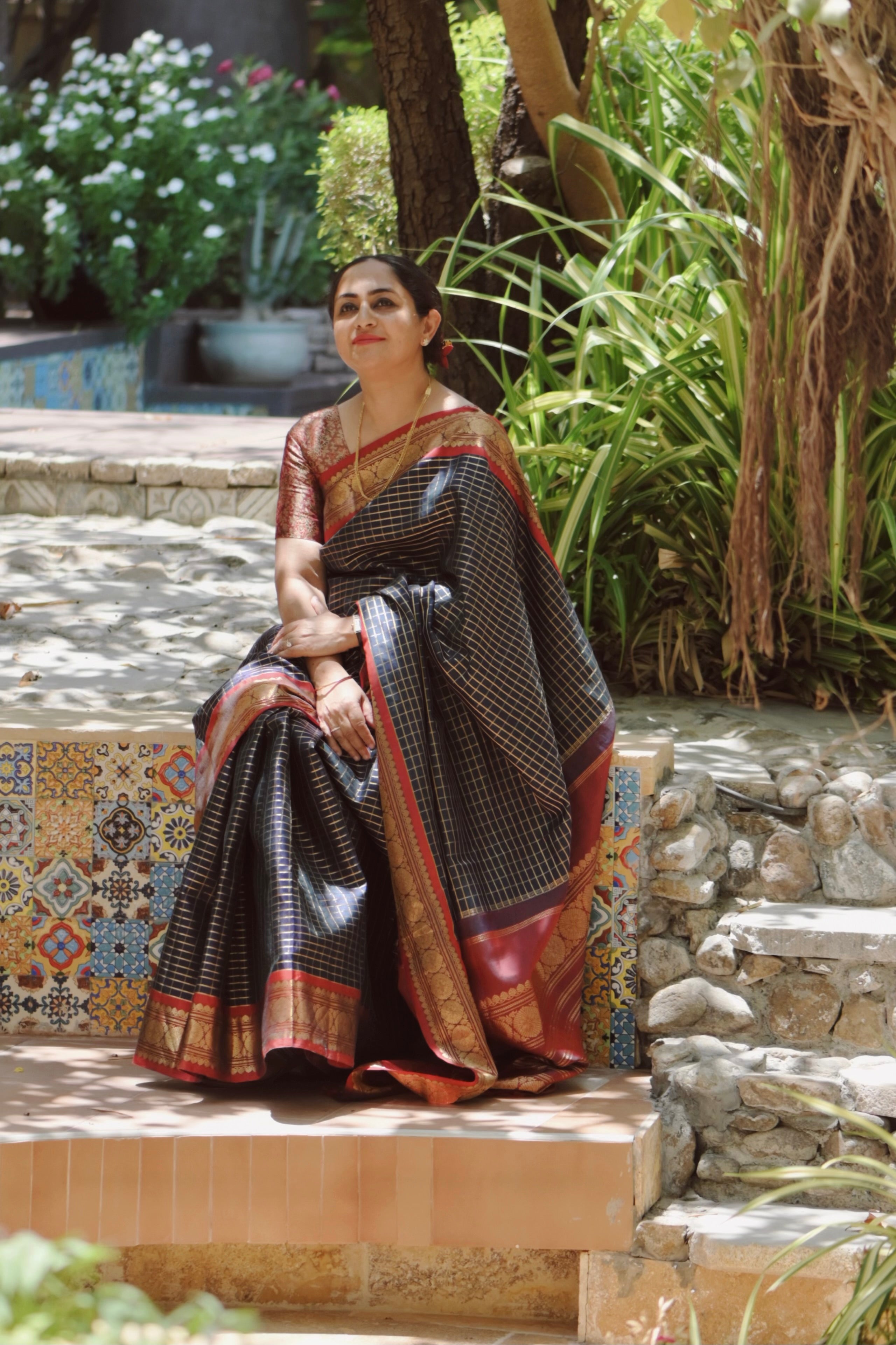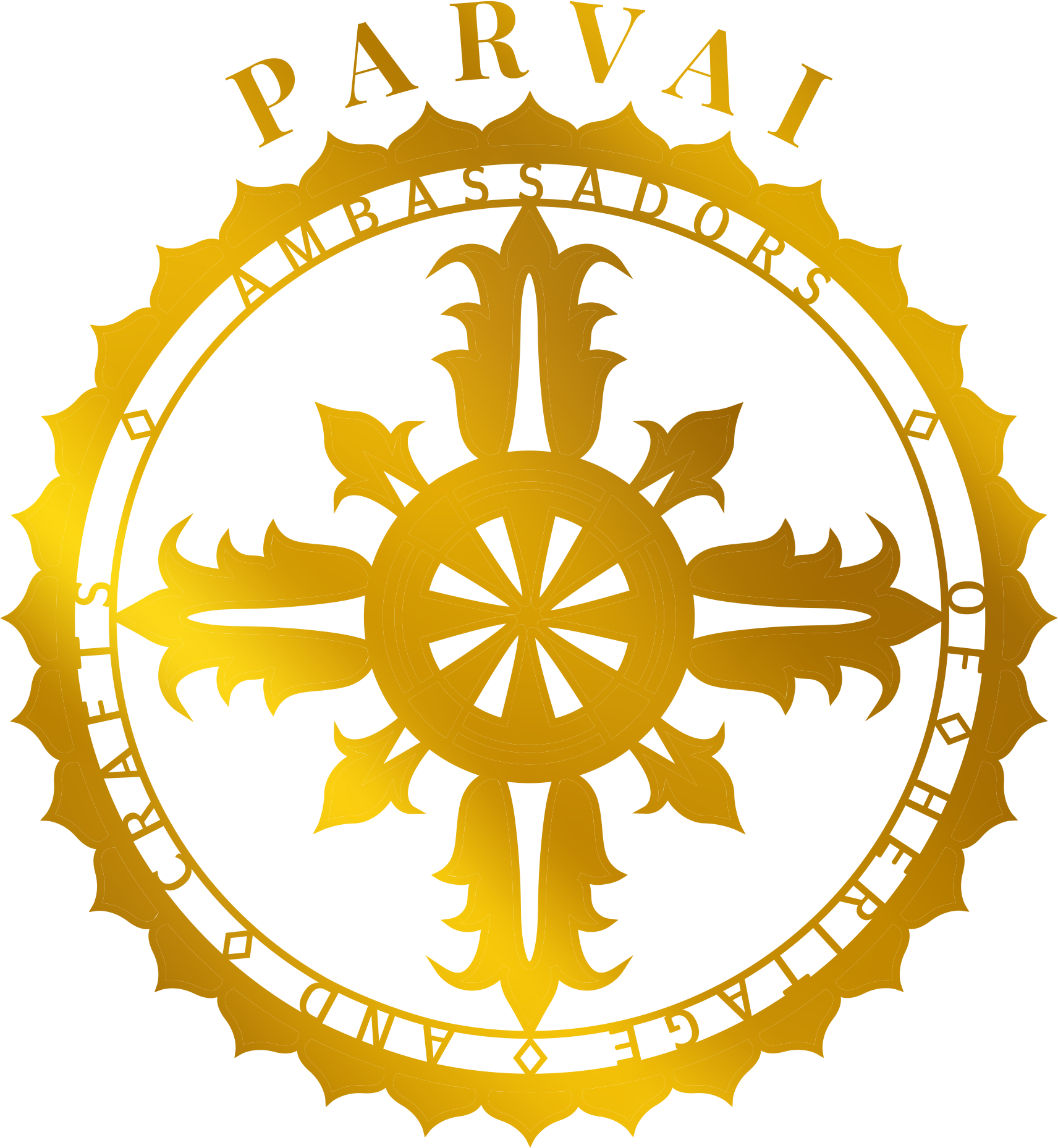
Tanvi
- Description
Handwoven on a parvai exclusive loom in Molkalmuru, this sari is one of great structure and beauty.
Perspective:
Molakalmuru represents a significant entity within the silk industry, primarily recognized for its production of pure silk sarees, without any blends. Historical documentation, including references in the Mysore State Gazetteer of 1967, underscores the region's commitment to the craftsmanship of pure silk weaving. The gazetteer states, “The weaving of pure silk cloth is confined mostly to Molakalmuru. The weaving industry of Molakalmuru is of provincial reputation, with nearly half of the town's population engaged in this craft.” Traditionally, the looms employed are primitive pit looms; however, the introduction of fly-shuttles has facilitated the modernization of certain operations. In 1664, approximately 590 looms were operational district-wide, dedicated to the production of silk fabrics. Essential processes in silk production encompass twisting, degumming, dyeing, and warping, with local artisans such as pattegars and khatris contributing to the creation of high-quality textiles.
Karnataka is renowned for its extensive silk production, boasting a rich history within the sericulture sector, supported by local rulers for over three centuries. Strategic efforts to enhance this industry have been in place; notably, in 1896, J.R.D. Tata established a silk rearing farm in Bangalore. Both the Central and State Governments have continually emphasized improvements within the silk industry of Molakalmuru. Established in 1949, the Central Silk Board plays a crucial role in promoting silk production across India. Furthermore, the Weavers Service Center, managed by the Government of India, provides essential design development and support to silk manufacturers and weavers.
The Government of India has recognized the challenges faced by this sector and has identified Molakalmuru as a vital cluster requiring assistance for its survival, growth, and development. This small town, situated in the eastern region of Karnataka and bordering Andhra Pradesh within the Chitradurga district, continues to possess the potential for revitalization in the silk industry.
Master weaver Ashwin, with great enthusiasm, has collaborated with Parvai to produce this design. He procures silk and zari through subsidized government-approved centers, enabling the exhibition of these high-quality sarees at a comparatively lower price than those from established clusters such as Kanchipuram. The saree design incorporates traditional sensibilities, thereby creating a spectacular presence that pays homage to the rich cultural diversity of Karnataka and underscores the importance of preserving its heritage.
Choose options

- Description
Handwoven on a parvai exclusive loom in Molkalmuru, this sari is one of great structure and beauty.
Perspective:
Molakalmuru represents a significant entity within the silk industry, primarily recognized for its production of pure silk sarees, without any blends. Historical documentation, including references in the Mysore State Gazetteer of 1967, underscores the region's commitment to the craftsmanship of pure silk weaving. The gazetteer states, “The weaving of pure silk cloth is confined mostly to Molakalmuru. The weaving industry of Molakalmuru is of provincial reputation, with nearly half of the town's population engaged in this craft.” Traditionally, the looms employed are primitive pit looms; however, the introduction of fly-shuttles has facilitated the modernization of certain operations. In 1664, approximately 590 looms were operational district-wide, dedicated to the production of silk fabrics. Essential processes in silk production encompass twisting, degumming, dyeing, and warping, with local artisans such as pattegars and khatris contributing to the creation of high-quality textiles.
Karnataka is renowned for its extensive silk production, boasting a rich history within the sericulture sector, supported by local rulers for over three centuries. Strategic efforts to enhance this industry have been in place; notably, in 1896, J.R.D. Tata established a silk rearing farm in Bangalore. Both the Central and State Governments have continually emphasized improvements within the silk industry of Molakalmuru. Established in 1949, the Central Silk Board plays a crucial role in promoting silk production across India. Furthermore, the Weavers Service Center, managed by the Government of India, provides essential design development and support to silk manufacturers and weavers.
The Government of India has recognized the challenges faced by this sector and has identified Molakalmuru as a vital cluster requiring assistance for its survival, growth, and development. This small town, situated in the eastern region of Karnataka and bordering Andhra Pradesh within the Chitradurga district, continues to possess the potential for revitalization in the silk industry.
Master weaver Ashwin, with great enthusiasm, has collaborated with Parvai to produce this design. He procures silk and zari through subsidized government-approved centers, enabling the exhibition of these high-quality sarees at a comparatively lower price than those from established clusters such as Kanchipuram. The saree design incorporates traditional sensibilities, thereby creating a spectacular presence that pays homage to the rich cultural diversity of Karnataka and underscores the importance of preserving its heritage.
Free delivery worldwide
Purchased products will be shipped out upon confirmation of payment from the payment gateway. We offer free shipping. Upon purchase, the product is dispatched in a minimum of 7 to maximum of 10 business days.
Urgent shipping within 2-5 days can be arranged at an additional charge based on the shipping location. The products will be delivered within a minimum of 3 and maximum of 10 working days. We only use professional and reliable courier services namely Delhivery, BlueDart and DHL for despach of our products.
Satisfied or refunded
Customers may return a product purchased from our online store within 2 days upon receipt of the product, only under below stated circumstances: 1. Visible defects or damages that affect its overall quality of the product. 2. Product received does not match the specifications as mentioned on our website. Please note that returns will not be entertained for reasons other than quality issues or specification mismatches. refunds approved will be creduted to the source account within a minimum of 3 working days and maximum of 7 working days. Read More
Top-notch support
We at Parvai are extremely focussed on providing the best possible support to our patron community. The Parvai customer support assures all our patrons details of what each product represents both in its tangible and non-tangible form - especially from a customer's point of view, from how it feels on the skin to its deep intrinsic value. We are ready to engage in detailed conversations about our product quality, process, people who made it and its perspective. Patrons can reach us at Parvai, HQ10, Primus Building, Door No: SP-7A, Guindy Industrial Estate, Chennai. 600032. Email: Enquiry@theparvaishop.com, Phone: +917358550888
Secure payments
We at Parvai prioritize the security and confidentiality of our customers' online transactions. To ensure a safe and secure payment experience, we have integrated the Razorpay payment gateway into our website. This declaration serves to inform our valued customers about the payment gateway we employ for all online payments. Razorpay is a trusted and industry-leading payment gateway that adheres to stringent security standards. It provides a secure infrastructure for processing online payments, employing advanced encryption technology and robust security protocols to protect sensitive financial information. Read More

